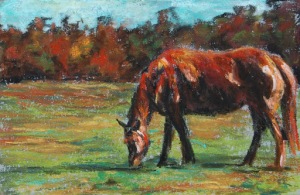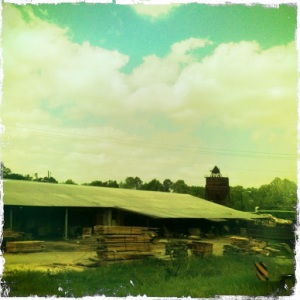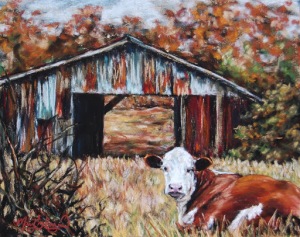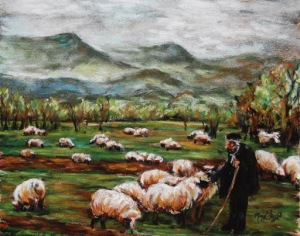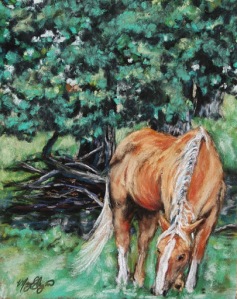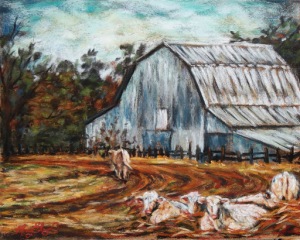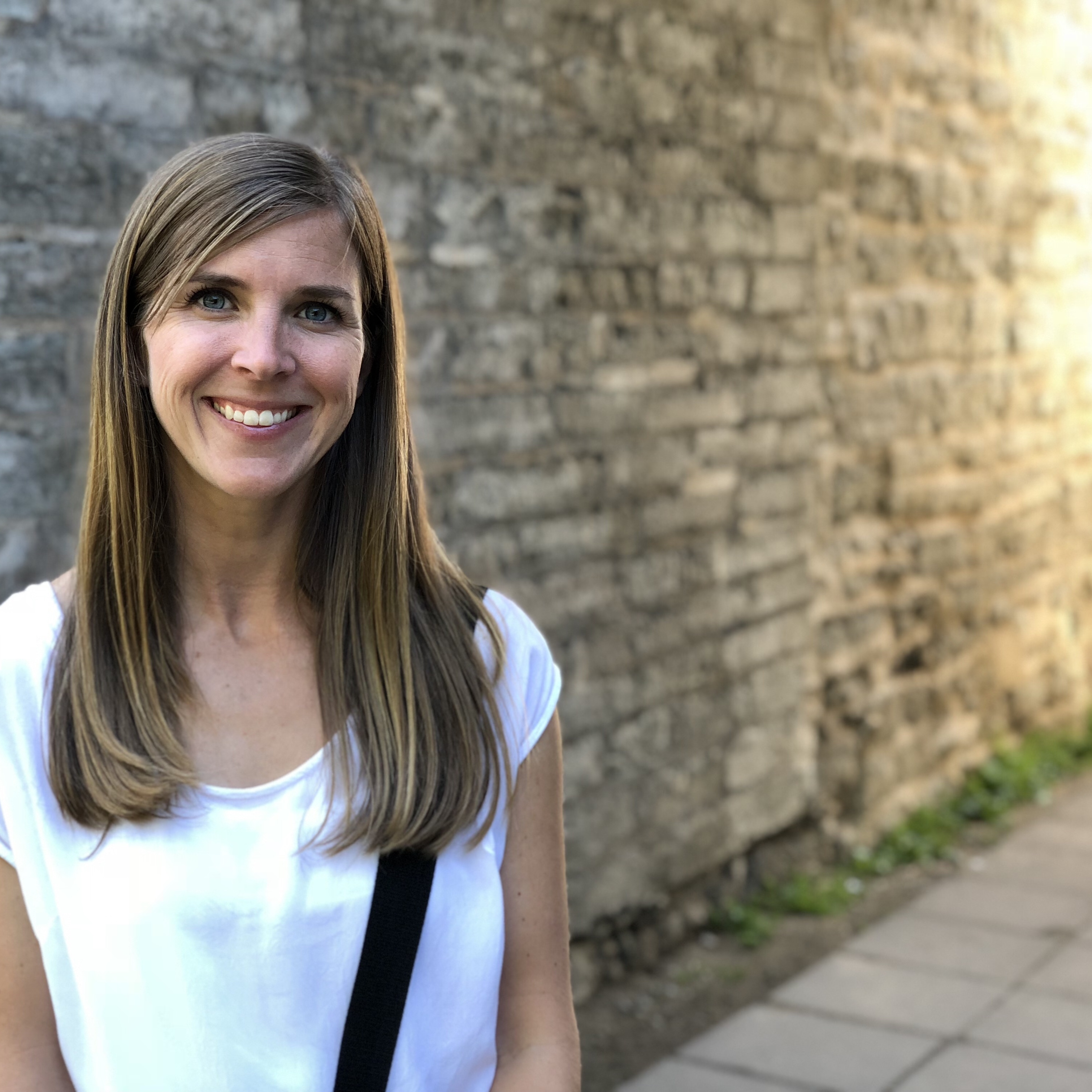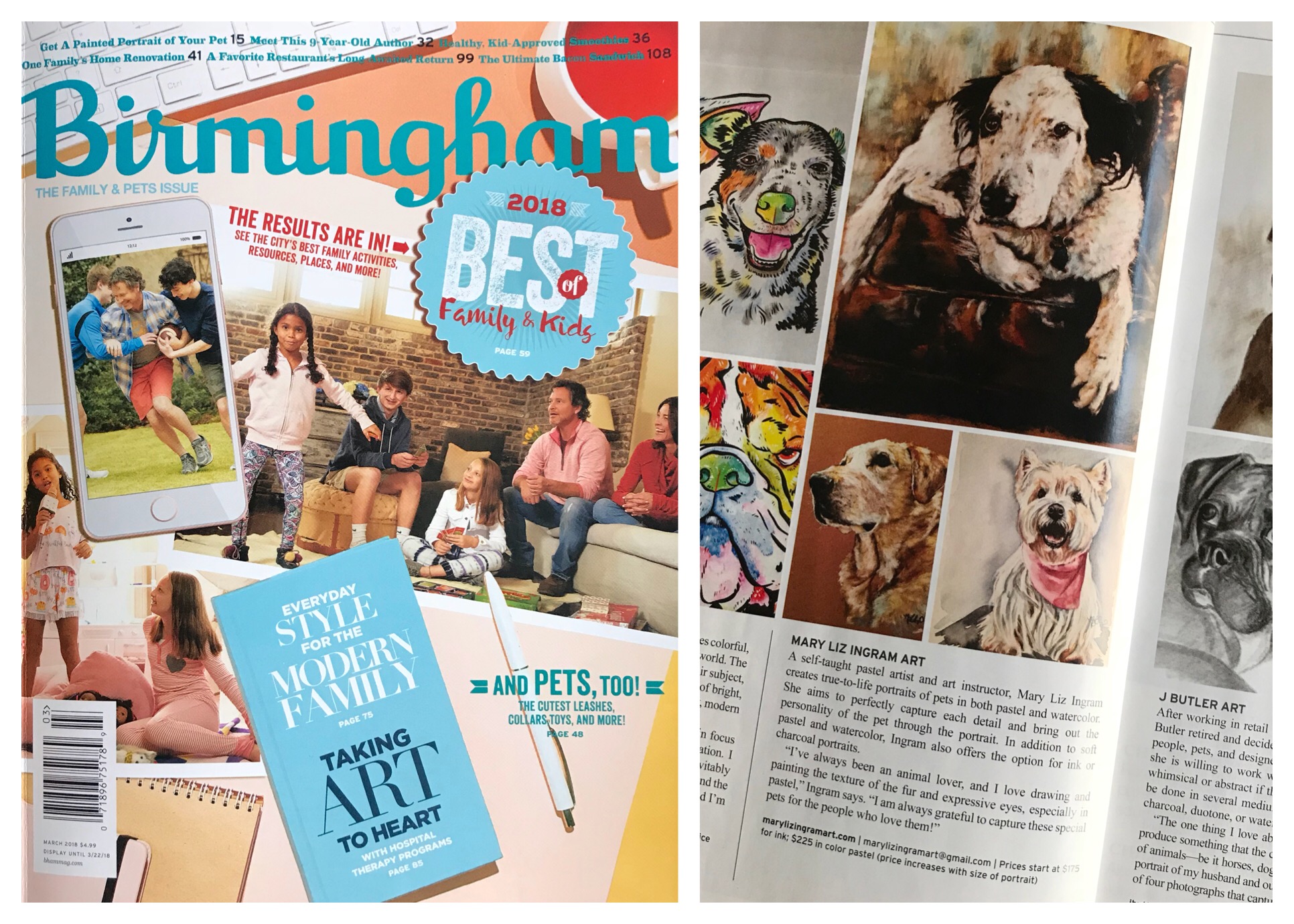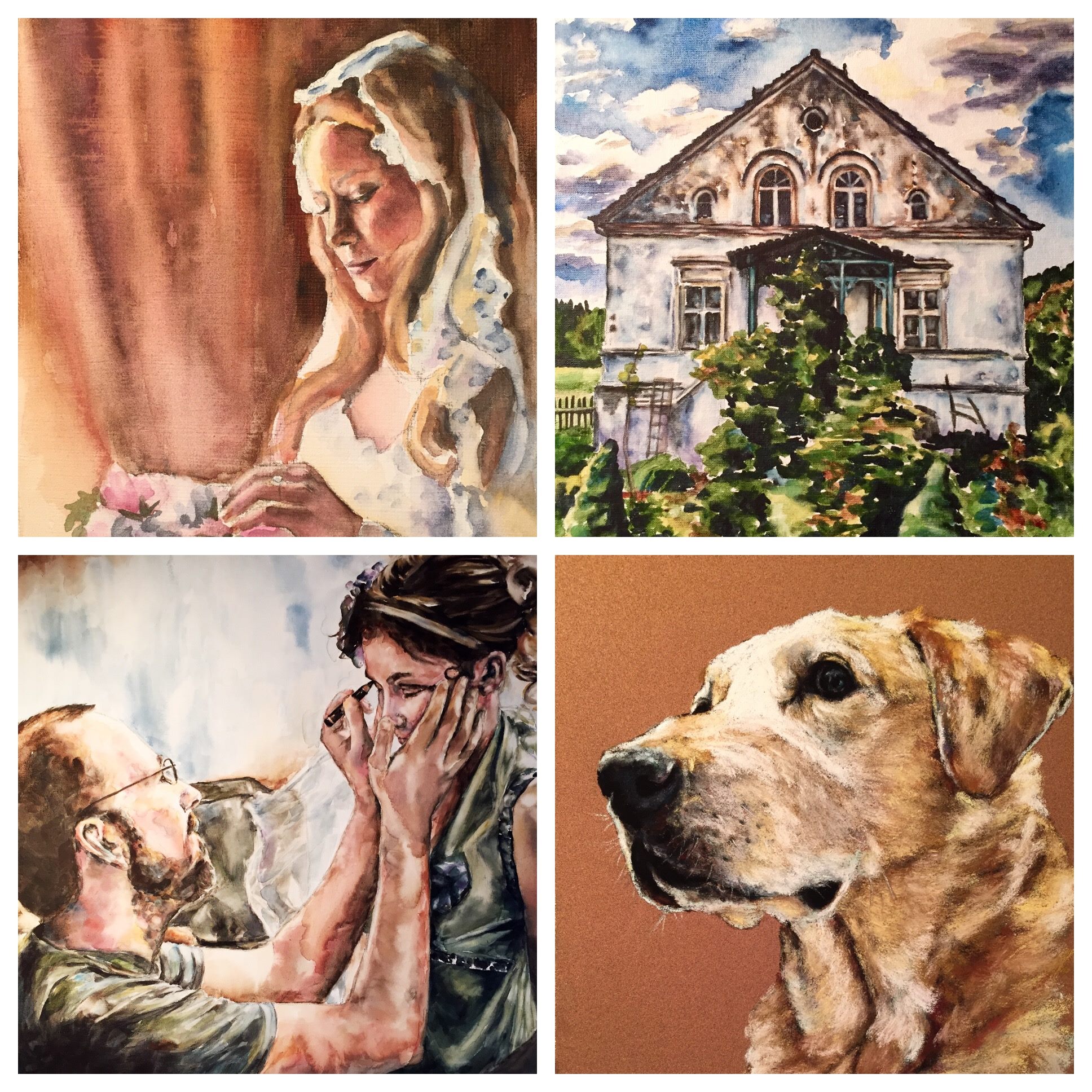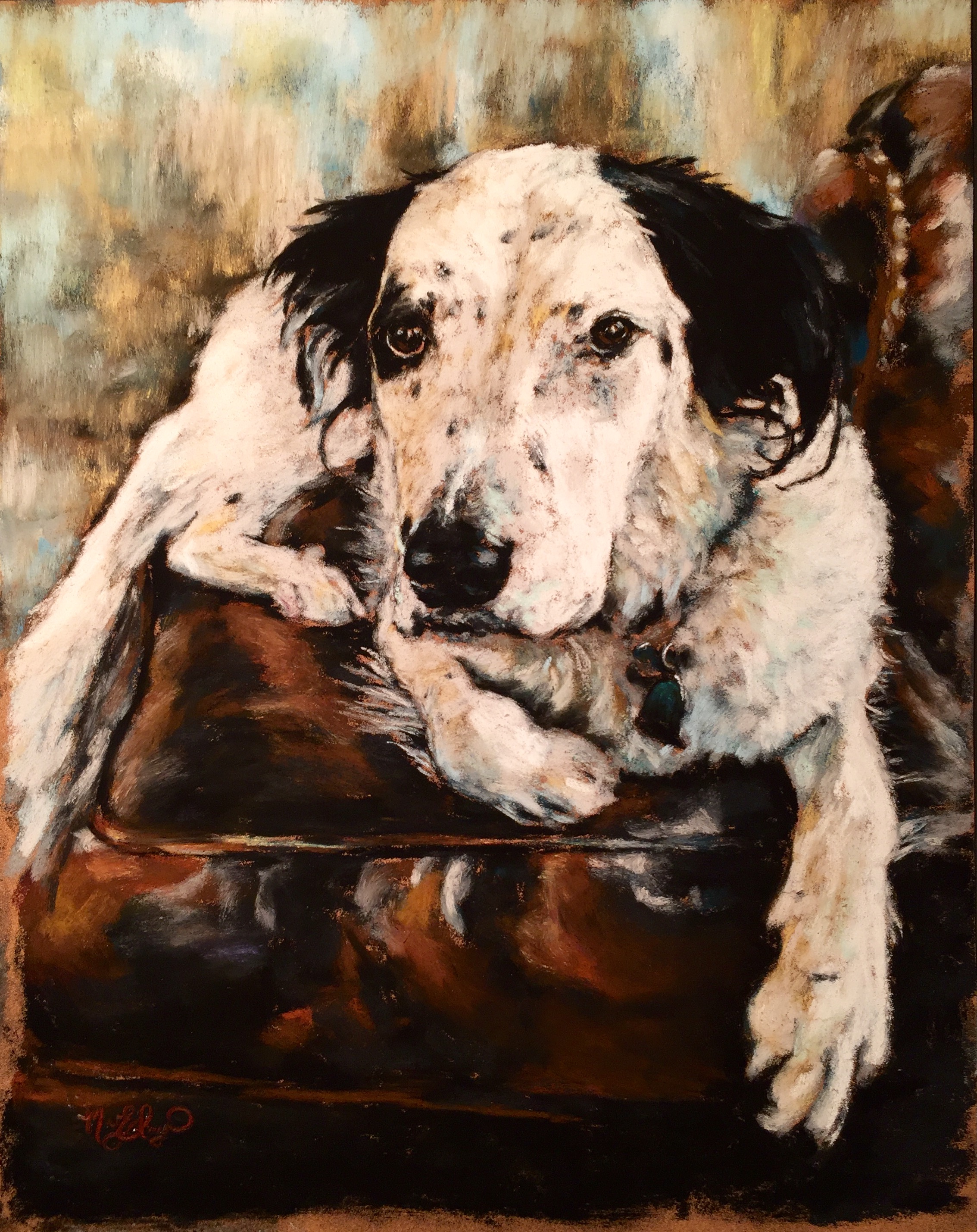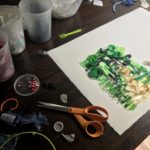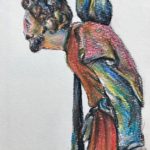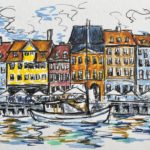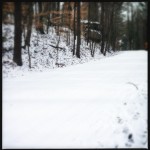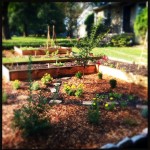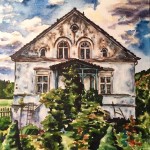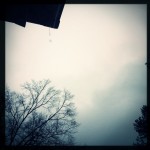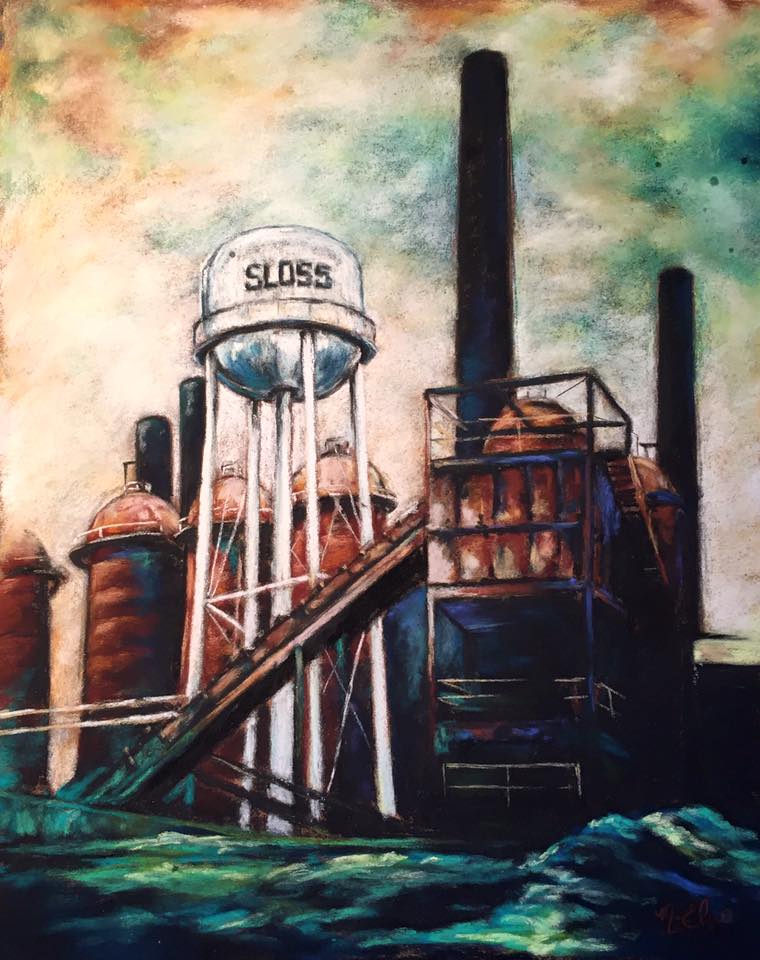Recently my friends at Forstall Art Supply gave me a sample of the very new pastel paper Colourfix Suede to try out. At first touch, it feels like a smooth suede, as the name suggests, very different from the rough sanded textures I usually choose.
My first experience with the paper showed me that certain pastels and techniques work better than others. Using very soft Sennelier pastels, I found that the softer, creamier pastels adhere better than harder pastels; a lighter touch yields better results than my usual heavy-handed layering.
4 1/2 x 7 soft pastel on Colourfix Suede
While it did hold layers well, more blending occurred than on sanded papers, maybe less blending than basic pastel papers (paper sans coatings).
I had trouble getting my beloved Sennelier black pastel to adhere.
Unsatisfied with my first attempt, I did a bit of research and found that Colourfix Suede is great for the delicate Pan Pastels and fans of pastel application via soft tools and fingers (toothier surfaces can irritate fingers and damage applicators). Pastel pencils are also supposed to work well on the fine surface. Because the suede surface is applied to a watercolor paper, an underpainting (using paint to create a colored base for the pastel piece) is said to work well on this paper.
With this new information, I tried a second piece, using several techniques and types of pastels.
4×4 Soft Pastel on Colourfix Suede
For the sky I applied the pastel with my fingers, rubbing the Sennelier pastel color onto the paper. This is as close as I could get to a Pan Pastel application. Again, the creamier pastels transferred more color. I used pastel pencils and Rembrandt pastels for the landscape. The pencils went on the paper well, and I was very surprised at how much color adhered with the Rembrandts, which are a harder pastel and usually not my favorite. The black went on darkly like I wanted, even over layers of pastel. On this paper, I would definitely reach for my Rembrandts!
As usual, I will say that all surfaces, pastels and combinations of the two yield different results. If you want a paper that will hold layers and result in a creamy, smooth painting, this paper is for you! If I use this paper in the future, I will draw with Rembrandt pastels and save my Senneliers for my sanded papers and boards.
Colourfix Suede is available in 6 colors, and black and white.








